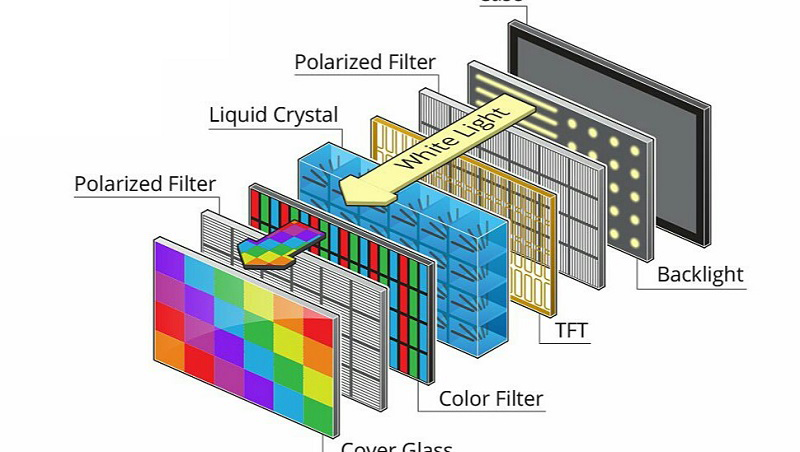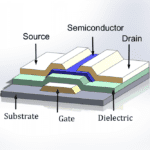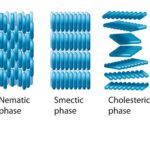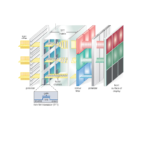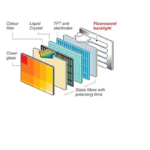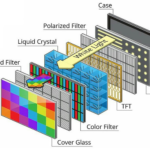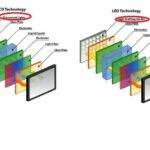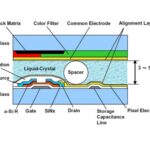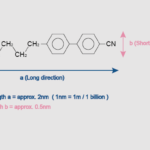A TFT LCD’s glass substrate serves as its base. The base for all the other parts is a glass surface that is flat, clear, and somewhat thin. A specific kind of glass with high transparency, a low thermal expansion coefficient, and great mechanical strength is typically used to make the glass substrate in order to endure the pressures of manufacture and daily use.
Alkali-free glass, which has a very low impurity level and is highly resistant to chemical and thermal shocks, is commonly used to make the glass substrate. Since it offers a high-quality surface for the deposition of the thin-film transistors (TFTs) and other layers that make up the TFT LCD, alkali-free glass is favoured for the production of TFT LCDs.
The glass substrate must be of the highest calibre possible to ensure that the TFT LCD has a high resolution and clarity. The quality and operation of the display may be compromised by scratches, bubbles, and other faults in the glass substrate.
There are several types of glass substrates used in TFT LCD manufacturing, including:
- Glass that is highly resistant to thermal shock and chemical corrosion is known as borosilicate glass. Its excellent mechanical strength and thermal stability make it a frequently used material in the production of TFT LCDs.
- Glass known as soda-lime is a type of glass that is frequently used to make flat glass goods. It is a popular option for low-cost TFT LCDs because it is relatively affordable and has good optical characteristics.
- Quartz glass is a type of glass with exceptional thermal and optical characteristics. It is suitable for use in high-performance TFT LCDs due to its high transparency and ability to withstand extremely high temperatures.
In a TFT LCD, the glass substrate, which serves as the foundation for all other layers, is an essential part. The glass substrate must to be of the highest calibre and composed of a certain sort of glass in order to provide great resolution, clarity, and durability. Depending on the needs of the application, several glass substrates are utilised to make TFT LCDs.
Also visit below page:
